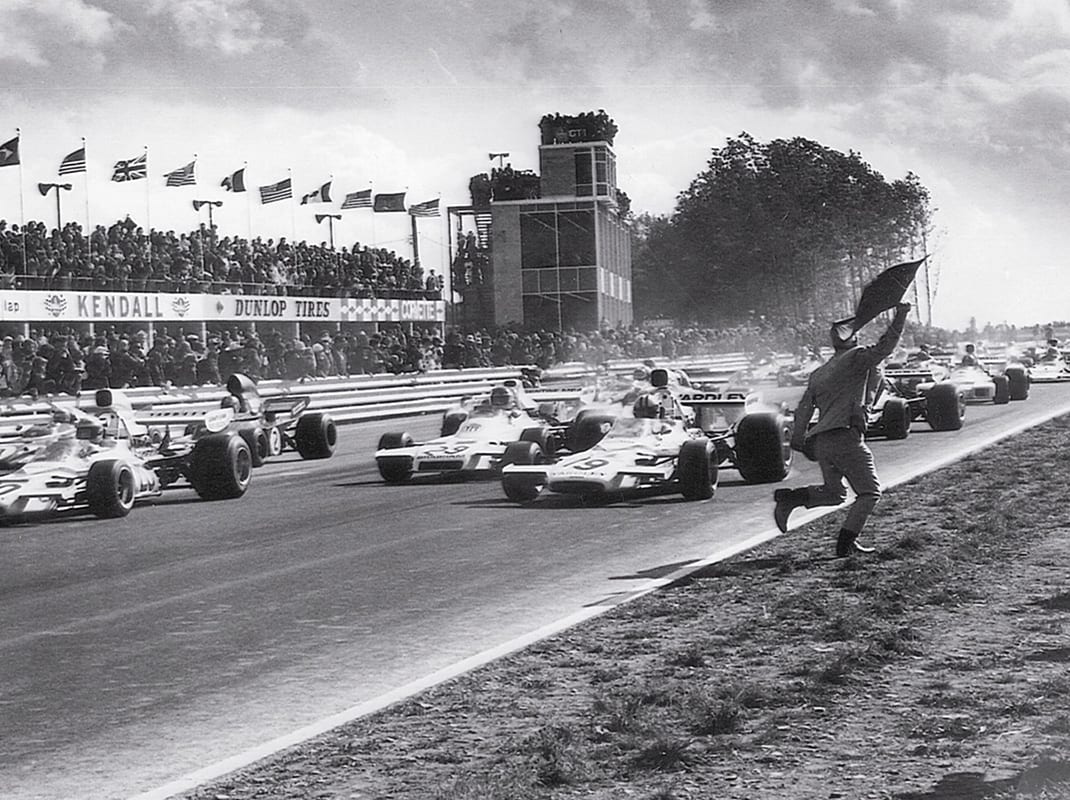In 1955, Road America in Elkhart Lake, Wis., envisioned by Clif Tufte as a sprawling 14-turn, four-mile course, opened with Phil Hill winning the inaugural race. In 1956, Watkins Glen Grand Prix Corp. opened an eight-turn, 2.3-mile circuit, known today as Watkins Glen Int’l.
Road America’s layout has remained unchanged since 1955, outside of technology and safety innovation. Watkins Glen has endured several layout modifications. For example, the start-finish line on the original course is where the Cameron Argetsinger grandstand is today.
Watkins Glen was reconfigured in 1971 with the start-finish line moved to its present-day location. In 1992, the inner loop, or the bus stop chicane, was added just before the carousel. Also in 1971, the long course, known as “The Boot,” was constructed.
In 1981, Watkins Glen’s future was threatened when, according to a New York Times article, the International Auto Sports Federation, after a meeting of its Formula One commission, removed the United States Grand Prix East at Watkins Glen from the schedule because of the track’s failure to pay debts to race teams. The article said more than $800,000 was owed.
On Aug. 13, 1981, the track declared bankruptcy and major spectator racing events were eliminated.
In July 1983, Corning Enterprises picked up the track and formed a partnership with Int’l Speedway Corp. In September 1983, it was announced Watkins Glen Int’l would reopen with two IMSA events, a SCCA national race and other club races.
In 1985, NASCAR announced it would race at Watkins Glen, returning to the region for the first time since 1965. The 1986 race was called the Bud at the Glen and was won by Tim Richmond.

NASCAR and its top-tier series, known today as the Monster Energy NASCAR Cup Series, has raced at the Glen every year since.
The Cup Series appeared at Road America in 1956, but it was the only NASCAR event there until the Xfinity Series visited the historic track for the first time in 2010.
NASCAR Xfinity Series driver Josh Bilicki has raced on both tracks in several disciplines, including with NASCAR. He has also raced on the road courses throughout the country, including Daytona Int’l Speedway and Circuit of The Americas in Austin, Texas. According to Bilicki, what sets Watkins Glen and Road America apart from Daytona and COTA is character.
Most road courses have names for certain parts or corners such as the Kink, the Boot, the Corkscrew, Canada Corner, the Raidillon, Nouvelle Chicane, etc.
“Any race car driver or fan probably in the world knows the Corkscrew,” Bilicki said. “Those are special corners that everybody knows what they are because they have so much character and so much history.”
Another aspect, Bilicki says, that makes road course racing fun is the ambiance and the support from the local community.
“The fans at Watkins Glen are insane,” he said. “The NASCAR weekend, I’ve never seen so many fans at a race track, camping out. It’s just a really cool experience.
“There are a lot of scenic areas at Watkins Glen, similar to Road America. As far as fans going to a road course, those two would be in my top picks in the country.”
The original courses in Elkhart Lake and Watkins Glen are listed in the National Register of Historic Places. Throughout the village of Elkhart Lake, several signs line the roads indicating portions of the old race track. The Watkins Glen Grand Prix Course (1948-’52) got its designation in 2002, while Elkhart Lake received its designation in 2006.
According to the National Registry, the former Watkins Glen Grand Prix course is “remarkably little altered from the race years of 1948 to 1952.”
The registry continues, “The former start-finish line is in front of the Schulyer County Courthouse, marked by modern yellow brick piers on either side of Franklin Street.” In 1990, signs were installed highlighting parts of the course, including “White House S,” “Schoolhouse Corner,” “Archie Smith’s Corner” and others.
At Elkhart Lake, the 1950 route is still intact as far as configuration. One small segment of the 1951-’52 circuit has been closed to automobile traffic since 1994.
“They’re special because they’re rustic; they’re old-school,” Bilicki said of Road America and Watkins Glen. “They’re scenic. They build around the tracks, rather than taking everything down.”
